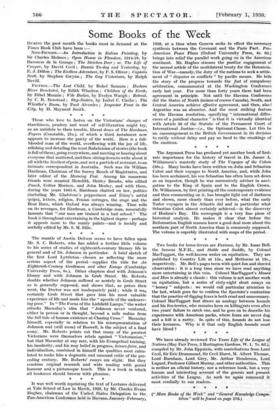It was well worth reprinting the text of Lectures delivered
at Yale School of Law in March, 1929, by Mr. Charles Evans Hughes, chairman of the United. States Delegation to the . Pan-American Conference held in Havana, January–February, 1928, at a time when Geneva seeks to effect the necessary synthesis between the Covenant and the Paris Pact. Pan- American Peace Plans (Oxford University Press, 4s. 6d.) brings into relief the parallel work going on in the American continent. Mr. Hughes stresses the positive engagement of the second article of the multilateral treaty for the Renuncia- tion of War—namely, the duty of the nations to seek a settle- ment of " disputes or conflicts " by pacific means. He tells the story of the progress towards the fact of compulsory arbitration, consummated at the ,Washington Conference early last year. For more than forty years there had been agreement in principle. Not until the Havana Conference did the States of North (minus of course Canada), South, and Central America achieve effective agreement, and then, alas ! Argentine was an absentee. And the most striking feature of the Havana resolution, specifying. " international differ-. ences of a juridical character " is that it is virtually identical. with Article 36 of the Statute of the Permanent Court of International Justice—i.e., the Optional Clause. Let this be an encouragement to the British Government in its decision to ratify without delay and pay no heed to the croakings of the cautious.






































 Previous page
Previous page